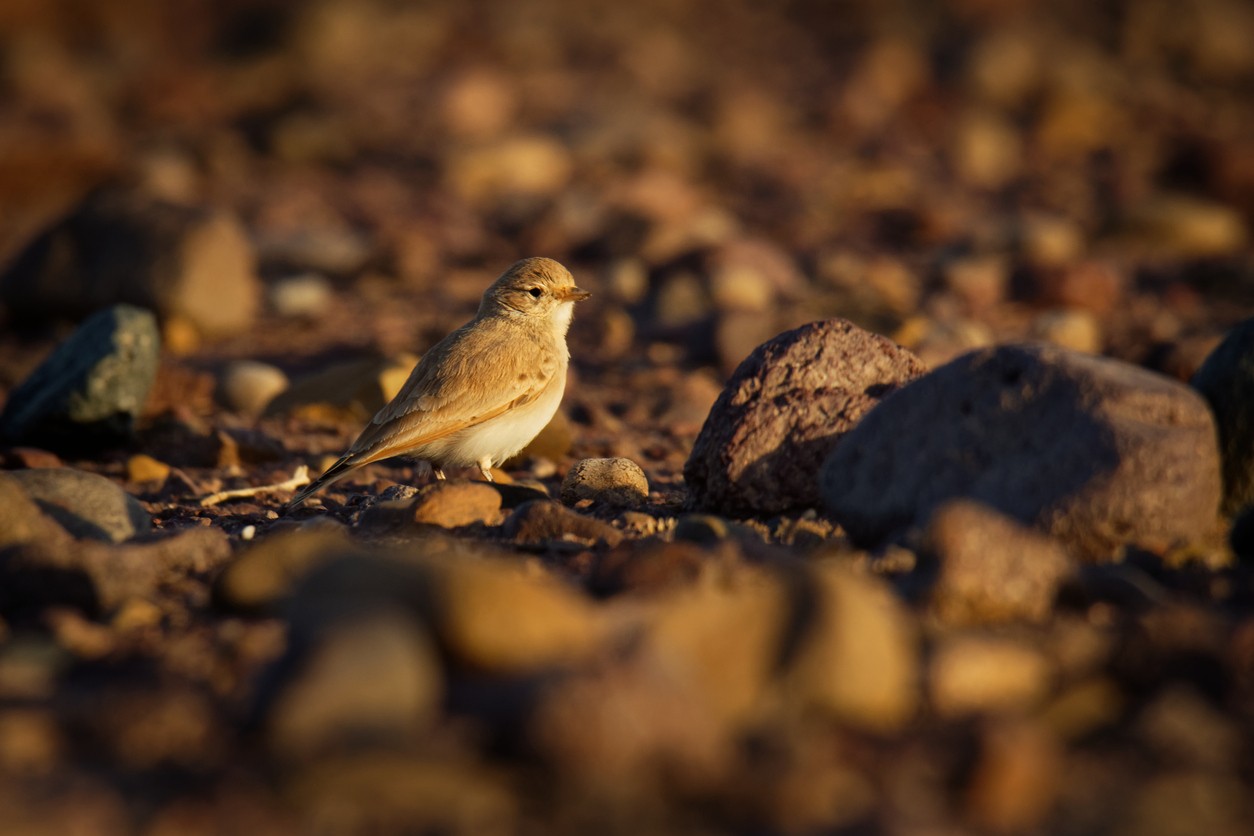Bar-tailed Lark
A species of Desert Larks Scientific name : Ammomanes cinctura Genus : Desert Larks
Bar-tailed Lark, A species of Desert Larks
Botanical name: Ammomanes cinctura
Genus: Desert Larks
Content
Description General Info

Description
The bar-tailed lark is similar to the desert lark in appearance, but at 14 to 15 cm (5.5 to 5.9 in), is slightly smaller, with a smaller, more domed head, a smaller beak, thinner legs and a shorter tail. The upper parts are sandy-buff washed with grey, while the underparts are whitish with little if any streaking, and the breast and flanks washed with buff. The rufous wings have dark trailing edges and the rufous tail has a terminal black band. 
Size
14 cm
Nest Placement
Ground
Feeding Habits
Bar-tailed Lark primarily consumes seeds, particularly small ones such as Aizoon, supplemented with plant material and insects like grasshoppers. Chicks are fed insects. Bar-tailed Lark forages on the ground, often in small non-breeding flocks, employing walking, running, and digging to find food.
Habitat
The bar-tailed Lark thrives in the arid expanses of the Palearctic region, favoring habitats that receive less than 100 mm of annual rainfall. It is typically found in desert and semi-desert environments characterized by flat or slightly rolling terrain with sandy or stony soils. Vegetation is minimally present or nearly nonexistent, and in Western Saharan areas, the bar-tailed Lark prefers stone-clay plains with interspersed grasses and slight depressions. Its preferred habitats are located within broader geographical regions that encompass expansive desert landscapes.
Dite type
Granivorous
General Info
Feeding Habits
Bird food type
Distribution Area
The bar-tailed lark has a large distribution across North Africa, the Arabian Peninsula, the Middle East and western Asia. Its range includes Afghanistan, Algeria, Bahrain, Cape Verde, Chad, Egypt, Iran, Iraq, Israel, Jordan, Kuwait, Libya, Mali, Mauritania, Morocco, Niger, Oman, Pakistan, Qatar, Saudi Arabia, Sudan, Syria, Tunisia, United Arab Emirates, Western Sahara and Yemen. Its typical habitat is sandy or stony desert or semi desert, with low scrubby vegetation. It is generally shier than the desert lark and has a preference for level ground whereas the desert lark tends to frequent rocky slopes and hillsides. 


Scientific Classification
Phylum
Chordates Class
Birds Order
Perching birds Family
Larks Genus
Desert Larks Species
Bar-tailed Lark